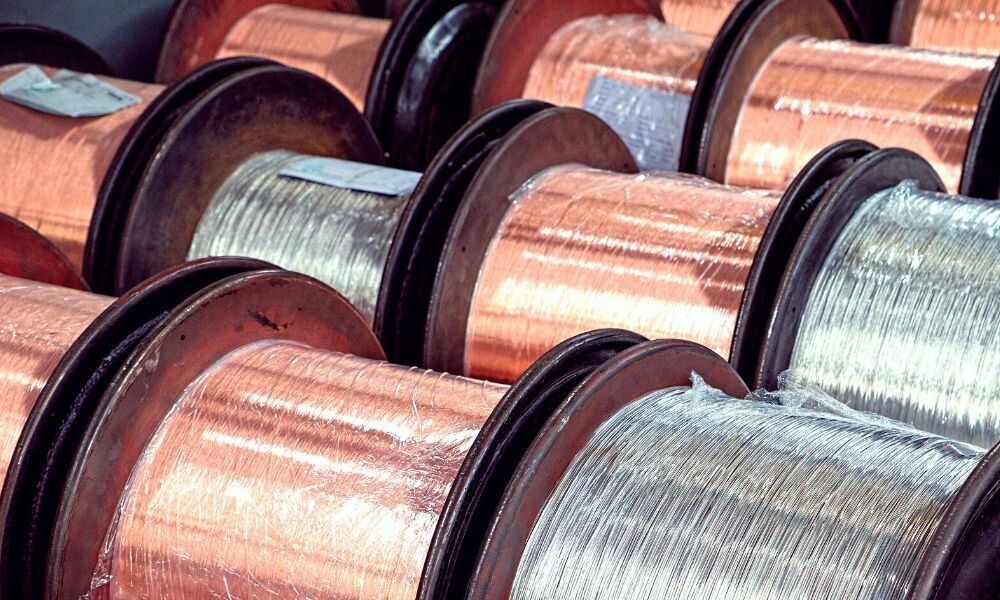

As of August 2025, the US has doubled the tariff from 25 per cent to 50 per cent for both aluminium and steel, but in the same context has exempted import tariffs on refined copper, making a visible contrast between the metals. The exemption has been made with consideration of the key role of the higher electricity costs as well as the dynamics of lobbying pressure contributing to the US policy. Macquarie analysts, Century Aluminum and data from the US Geological Survey (USGS) have all weighed in on the implications of these tariffs for domestic production and global trade.

The expansion of the tariff on aluminium and steel included hundreds of derivative products which contain the metals in question. This move was undertaken to close the circumvention loopholes in the tariff and boost domestic manufacturing. The tariff implication is significant for a variety of goods, including appliances, heavy equipment and automotive parts.
It has been estimated by the industry analysts that the increased tariff will directly impact the overall US tariff rate by at least one percentage point. The current shift in the policy creates a direct lobbying impact, especially by the steelmakers, and undermines the commitment to protecting American industries as enunciated by the US administrations.
As of 2025, the US has significantly reshaped its trade stance on critical industrial metals, imposing a 50 per cent tariff on aluminium and steel imports while simultaneously exempting refined copper from similar duties.
Aluminium, which is energy-intensive to manufacture, now faces increased US manufacturers' costs in essential sectors like car-making, aerospace and building, which can impact production schedules, pricing tactics and supply chain choices.
Conversely, copper has a tariff exception, given its critical function in electrical installations and industrial uses, as well as on account of the increased cost of electricity involved in its manufacture. Not only does this policy distinction establish a strong market differentiation between copper and aluminium, but it also indicates the broader ramifications for global trade trends, where foreign suppliers and American purchasers are altering sourcing, investment and operating strategies in response to the changing tariff environment.
In the current scenario, Washington has taken a selective approach to metal tariffs, targeting only semi-finished copper products, including wires, tubes and sheets, while exempting refined copper from duties. Following the announcement last Wednesday, Comex copper prices have declined by over 20 per cent.
By contrast, refined aluminium imports into the US since June have been subjected to a 50 per cent tariff, reflecting the higher electricity costs faced by domestic aluminium producers relative to their copper counterparts. These measures form part of broader US initiatives aimed at revitalising domestic metal smelting capacity and reducing dependency on imported metals.
Also read: Trump aluminium tariffs shake the industry — how are SMEs surviving the storm?
However, following the US increase in certain aluminium imports, Century Aluminum had announced plans to restart over 50,000 tonnes of idled production at its Mt. Holly smelter in South Carolina earlier this month. This USD 50 million investment aims to return the facility to full capacity by June 30, 2026, marking its first 100 per cent operational status in over a decade and contributing nearly 10 per cent to the nation's total aluminium output.
The move is expected to create more than 100 jobs and underscores the company's strategic response to the current tariff regime. The restart is further supported by an extended power supply agreement with Santee Cooper, South Carolina's public service authority, through 2031. Century Aluminum anticipates that ongoing supply constraints will drive aluminium prices higher, bolstering margins.
Century Aluminum has been a leading proponent of these tariffs, emphasising their critical role in safeguarding the remaining US aluminium smelting capacity. Based on this, the company has commented, "Century Aluminum applauds President Trump's steadfast defence of domestic production of critical metals through raising aluminium tariffs to 50 per cent."
In contrast to this, the exemption of the refined copper creates a significant positive impact for the US industry and the overall copper sector, including Freeport-McMoRan, which had previously warned of the possibility of a global trade war creating substantial damage to the US copper production.
In a memo, Century Aluminum stated, "A global trade war could lead to slower economic growth... slower growth in the United States or globally would negatively impact copper prices, which could threaten the sustainability of the domestic copper industry due to its high cost structure."
The further argument supports the US tariffs concerning the share of the energy and its prices that is highly relevant to the overall smelting costs. The energy used in the production of primary aluminium is deemed to be 50 per cent, which, if compared with the copper sector, the energy cost is just 30 per cent.
Macquarie analyst Marcus Garvey conveyed, “There is no economic justification for building any new aluminum smelting capacity without significant intervention. Even with intervention, it may not be enough.”
As per the analysts, the biggest challenge that the potential investors may face concerning the US aluminium smelters is in securing the long-term power purchase contracts, which are available at competitive rates.
The current scenario marks the high cost of electricity as the major cost for the fall in the number of active smelters to four within the US territory, which previously recorded 23.
As per the data revealed by the US Geological Survey (USGS), in 1995 the total primary production stood at 3.35 million tonnes, which in 2015 dropped to 1.6 million tonnes. In the last year, the same stood at just 670.000 tonnes.
Also read: US tariffs on aluminium weigh heavily on Wisconsin manufacturer
Responses








